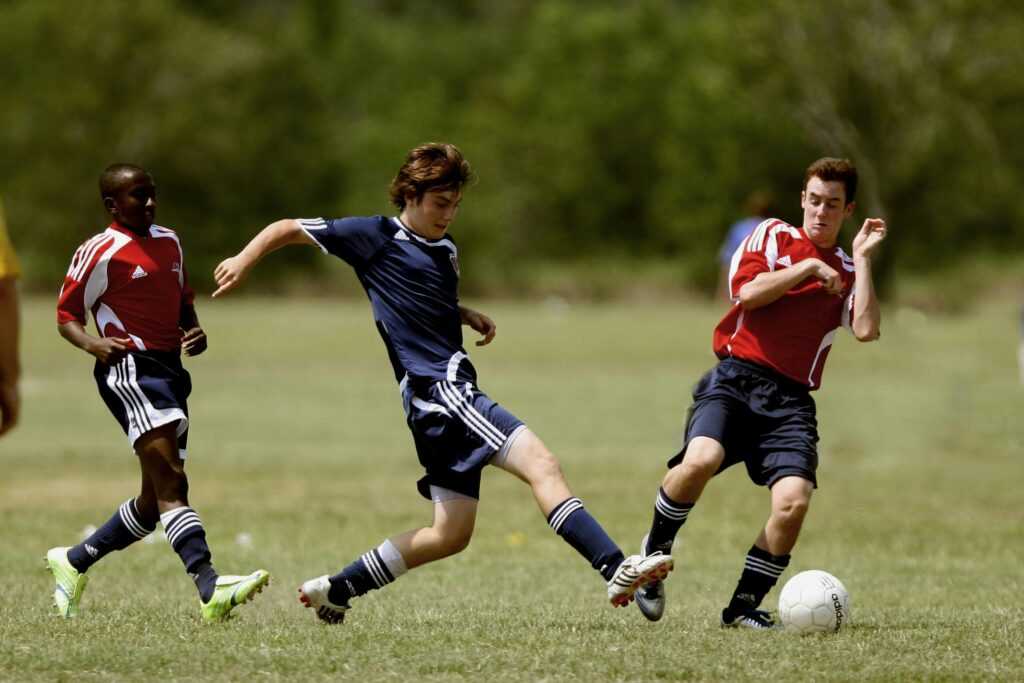Playing football is exhilarating, but it comes with the risk of foot and ankle injuries that can bench even the most seasoned players. As a passionate football enthusiast, I understand the importance of proper foot and ankle care to prevent sprains and strains that could sideline athletes. In this article, I’ll delve into essential tips and strategies to help football players stay on the field and off the injury list.
From warming up effectively to choosing the right footwear, every precaution counts when it comes to safeguarding your feet and ankles during intense gameplay. As someone who has witnessed the impact of injuries firsthand, I’m eager to share valuable insights on injury prevention techniques that can make a significant difference in a player’s performance and overall well-being. Let’s explore how a proactive approach to foot and ankle care can keep footballers in top shape throughout the season.
Understanding Foot and Ankle Injuries in Football
In football, foot and ankle injuries are common due to the nature of the sport, where quick movements, sudden stops, and changes in direction put immense strain on these areas.
- Common Types of Injuries
I have observed that some of the most frequent foot and ankle injuries in football include sprains, strains, fractures, and tendonitis. Sprains occur when ligaments connecting the bones are stretched or torn, commonly affecting the ankle. Strains, on the other hand, involve muscles or tendons and often result from overuse or sudden movements. Fractures can occur in the bones of the foot or ankle due to impact or excessive force, while tendonitis is the inflammation of tendons from repetitive stress. - Risk Factors for Athletes
In my experience, several risk factors increase the likelihood of foot and ankle injuries among football players. Poor conditioning, inadequate warm-up routines, improper footwear, and playing on uneven surfaces can heighten the risk. Additionally, factors like previous injuries, muscle imbalances, and lack of flexibility can contribute to the vulnerability of athletes to sustaining foot and ankle injuries on the field.
Preventive Techniques for Sprains and Strains
When it comes to preventing sprains and strains in football, focusing on certain key aspects can significantly reduce the risk of injuries on the field. Here are some effective strategies to mitigate the chances of foot and ankle injuries:
Proper Footwear and Supports
Selecting the right footwear plays a crucial role in preventing sprains and strains during football matches. Opt for cleats that provide adequate traction on the playing surface to minimize slips and twists. Additionally, consider using supportive inserts or orthotics to enhance stability and reduce the risk of ankle rolling during sudden movements.
Pre-Game and In-Game Best Practices
Prior to kick-off, ensure you engage in thorough warm-up exercises that target the muscles in your feet and ankles. Dynamic stretches, such as ankle circles and toe taps, can help prepare these areas for the physical demands of the game. During gameplay, maintain proper form and technique when executing maneuvers to avoid unnecessary stress on your foot and ankle joints. Stay hydrated to prevent muscle fatigue and cramping, which can compromise your stability and increase the likelihood of injuries.
Treatment and Recovery Strategies

When it comes to treating foot and ankle injuries in football, prompt and proper care is crucial for a quick and effective recovery. Here are some essential strategies for managing these injuries:
Immediate Care for Injuries
After sustaining a foot or ankle injury on the field, it’s vital to follow the RICE protocol: Rest, Ice, Compression, and Elevation. By promptly resting the injured area, applying ice to reduce swelling, using compression to support the injury, and elevating the foot or ankle above heart level, players can minimize pain and swelling while promoting healing.
Long-Term Rehabilitation Methods
To ensure a full recovery and prevent future injuries, long-term rehabilitation is essential. This may include physical therapy sessions focusing on strengthening the muscles surrounding the foot and ankle, improving flexibility, and enhancing balance and proprioception. Additionally, gradually reintroducing weight-bearing activities, such as walking, jogging, and specific football drills, can aid in rebuilding strength and stability in the injured area. Consistent rehabilitation exercises and following the guidance of healthcare professionals are key to a successful recovery process.
Importance of Professional Guidance
When it comes to foot and ankle injuries in football, seeking professional guidance is essential for optimal recovery and prevention. Let’s delve into when to consult a specialist and the crucial role of sports medicine professionals in this regard.
When to Consult a Specialist
In cases of persistent pain, swelling, or difficulty bearing weight on the foot or ankle, it’s advisable to consult a specialist promptly. Ignoring these symptoms can exacerbate the injury and prolong the recovery process. Therefore, seeking timely medical attention is vital to ensure proper diagnosis and treatment.
Role of Sports Medicine Professionals
Sports medicine professionals, including orthopedic surgeons, physical therapists, and athletic trainers, play a significant role in managing foot and ankle injuries among football players. Orthopedic surgeons provide expert medical care, offering accurate diagnoses and appropriate treatment plans. Physical therapists guide athletes through rehabilitation exercises to enhance strength, restore mobility, and prevent re-injury. Athletic trainers assist in injury prevention strategies, optimizing performance on the field. Collaborating with these professionals ensures comprehensive care and support for football players dealing with sprains and strains.

 Danielo Fleischeronic is the visionary founder of Awesome Football Network, a premier destination for in-depth football coverage and analysis. His commitment to the sport is reflected in the platform's rich content, which includes breaking news, match analyses, and expert commentary. Danielo’s extensive knowledge and passion for football drive the network’s mission to provide fans with the latest insights and updates from around the world.
In addition to his role as founder, Danielo is also an accomplished article writer. His writing covers a broad spectrum of football-related topics, from tactical breakdowns to player profiles, offering readers a comprehensive understanding of the game. Through his work, Danielo aims to enrich the football experience for enthusiasts and professionals, making Awesome Football Network a trusted resource in the football community.
Danielo Fleischeronic is the visionary founder of Awesome Football Network, a premier destination for in-depth football coverage and analysis. His commitment to the sport is reflected in the platform's rich content, which includes breaking news, match analyses, and expert commentary. Danielo’s extensive knowledge and passion for football drive the network’s mission to provide fans with the latest insights and updates from around the world.
In addition to his role as founder, Danielo is also an accomplished article writer. His writing covers a broad spectrum of football-related topics, from tactical breakdowns to player profiles, offering readers a comprehensive understanding of the game. Through his work, Danielo aims to enrich the football experience for enthusiasts and professionals, making Awesome Football Network a trusted resource in the football community.
